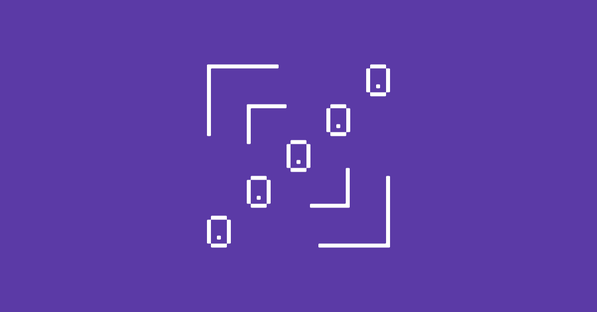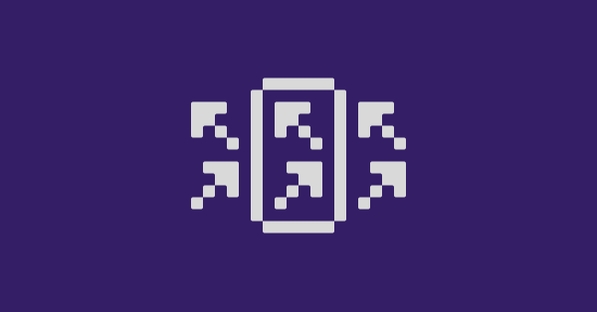Building and maintaining a high-performing ecommerce frontend is expensive. Whether you choose a traditional SaaS solution or custom development, costs add up quickly with development time, performance optimizations, integrations, and ongoing maintenance.
Frontend as a Service (FEaaS) offers a different approach. By handling frontend complexity while giving you full customization capabilities, it helps businesses reduce costs in both the short and long term.
Let’s dive into how FEaaS can save you money compared to SaaS frontend or custom builds.
What is Frontend as a Service?
Frontend as a Service (FEaaS) is a modern approach to building and managing ecommerce frontends. Instead of creating everything from scratch, businesses can leverage a pre-built yet flexible frontend layer designed to integrate with their existing backend and third-party services.
Think of it as a middle ground between rigid, one-size-fits-all platforms and costly custom development. With FEaaS, you get the freedom to tailor your storefront without the hassle of managing infrastructure or spending months coding basic functionalities. It’s built to work with headless CMSs and other backend services, giving you the flexibility to create a high-performing, modern storefront without unnecessary complexity.
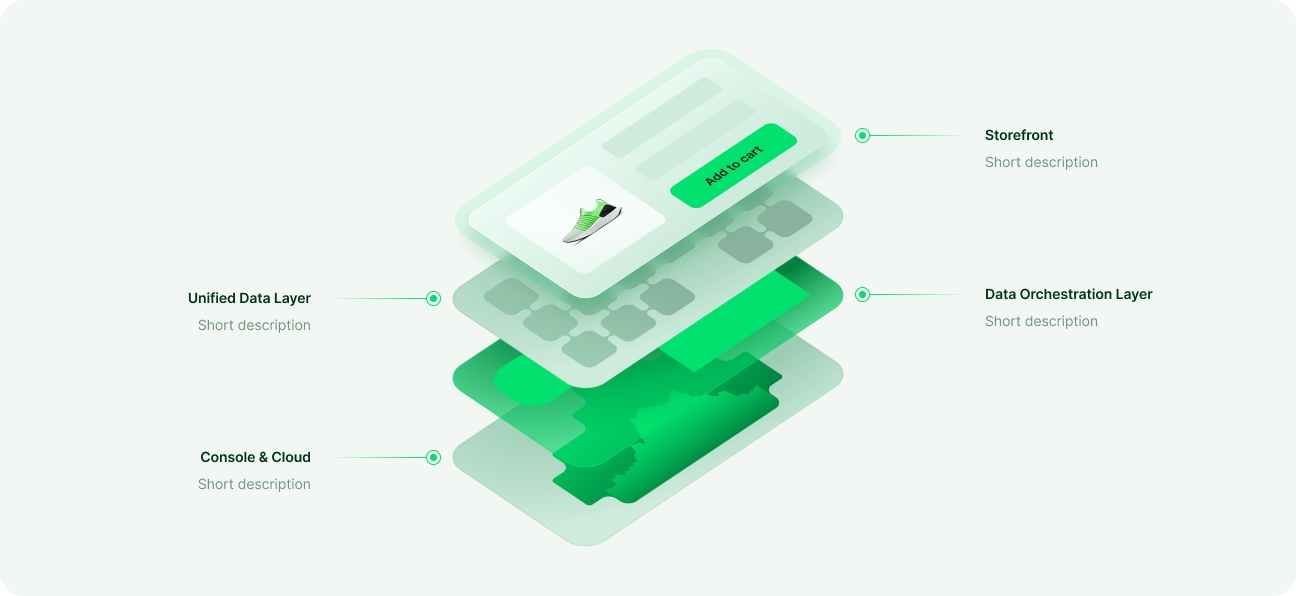
What’s in the FEaaS package?
A well-designed FEaaS platform provides everything you need to build, test, and deploy an optimized frontend, including ready-made UI components, data orchestration layer for connecting third-party services, cloud hosting, and even built-in analytics. By handling these foundational elements, FEaaS enables ecommerce teams to focus on delivering unique customer experiences rather than dealing with infrastructure challenges.
The financial benefits of Frontend as a Service
Frontend as a Service offers a cost-effective alternative to traditional custom development and rigid SaaS solutions, including several crucial benefits:
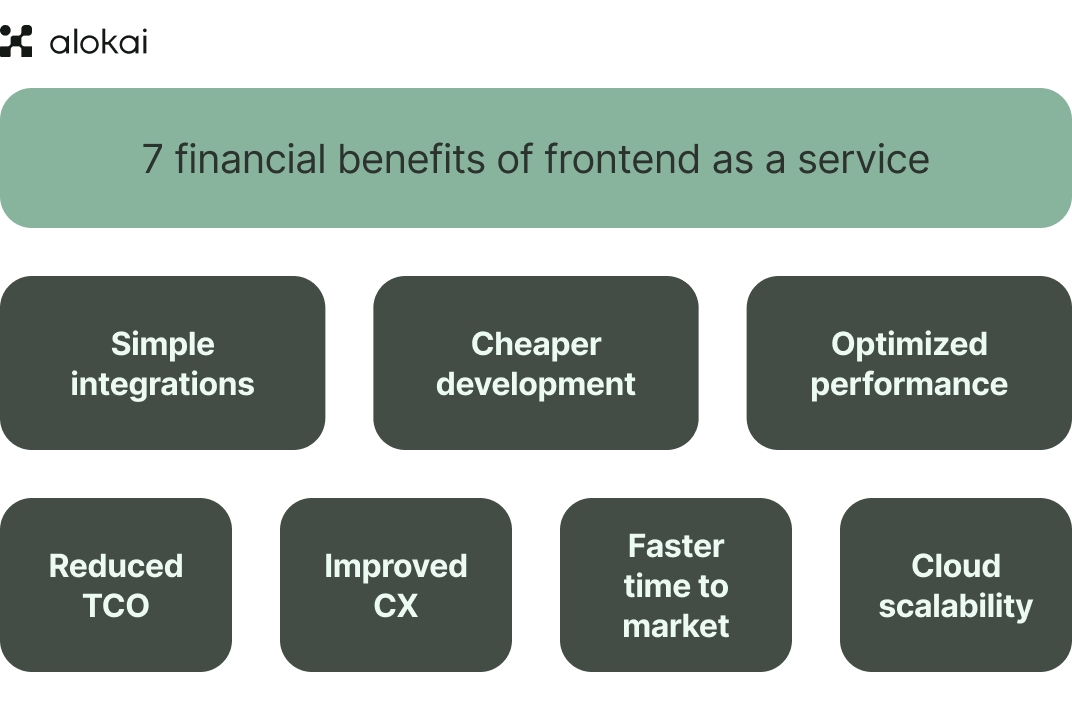
1. Faster time to market
The faster you go live, the sooner you can start selling. Unfortunately, launching an ecommerce site takes time, and every delay means lost revenue.
This is where FEaaS comes in. Instead of building everything from scratch, your development team gets ready-made components and integrations, cutting months off the frontend development process. Since all the core frontend elements are already available to your developers, they can create your website or application in significantly less time.
Take White Stuff, for example. By leveraging Alokai’s Frontend as a Service solution, they reduced development time by many months:
With the old tech stack, it would take two years of development to roll out certain features. Now, we can deliver them in less than three months. That's exactly the agility that we hoped for.
Ross Loughlin
Head of ecommerce, White Stuff
2. Lower development costs
Building a custom frontend is not only time-consuming but also costly. Rates are high for complex ecommerce projects, and hiring developers for a full frontend build can cost hundreds of thousands of dollars, depending on complexity.
With FEaaS, core functionalities – frontend components, third-party integrations, and even performance support – come out of the box. This means teams can shift their focus to customizations that truly matter to their business, rather than reinventing the wheel for every new project.
As we've already established, FEaaS dramatically reduces the time-to-market which has a huge impact on development costs, making it a more budget-friendly solution than traditional custom builds.
3. Optimized web performance and higher conversion rates
Improving your customer experience is key to boosting conversions and revenue. When customers have positive interactions with your brand, they’re more likely to return and recommend your products.
This starts with making sure your frontend is fast, responsive, and delivers what your customers need. With FEaaS, the heavy lifting of performance optimization and integrations is already done, allowing you to focus on customizing the experience. A great UI not only enhances satisfaction but directly impacts how much customers spend – and happy customers mean more revenue.
Plus, better performance (thanks to practices like lazy loading, code splitting, and optimized content) improves customer retention, which is crucial for conversion rates!

4. Reduced total cost of ownership (TCO) over time: FEaaS as a long-term investment
SaaS frontend solutions (like Wix or Squarespace) might seem like a budget-friendly choice at first, but they often come with hidden costs due to limitations that require expensive workarounds.
Custom frontends, while offering more flexibility, demand constant maintenance and scaling efforts, leading to high long-term costs.
FEaaS strikes the perfect balance. It's not as cheap as SaaS upfront, but it offers much more flexibility and a lower TCO in the long run. Legacy platforms make even small changes expensive and time-consuming due to their rigid architecture. In contrast, composable commerce solutions offer much more flexibility, making it easier and more cost-effective to adapt to changing business needs.
A great example is Brompton Bikes, which needed a flexible frontend that could scale with their growing business. By switching to Alokai’s solution, they were able to expand into new markets without costly replatforming or having to worry about backend constraints.
Alokai just works extremely well. We don't really have to think about anything unless we want to create a new component for the frontend. We have very little need to actually do anything with your storefront, which I think is a testament to how well it works and how well it's been integrated.
David Tidy, Digital Product Manager at Brompton.
5. Improved customer experience = more sales
Customer experience (CX) is how users feel after interacting with your brand, and your frontend plays a crucial role in shaping that experience. A slow or clunky UI can turn customers away before they even make a purchase.
Even small issues, like sluggish animations, clunky mobile layouts, or delayed interactions, can frustrate users and impact sales, with research showing that a one-second delay in page load time can cut conversions by 7% and reduce page views by 11%.
Custom frontends often require constant testing to maintain optimal performance, but with Frontend as a Service solutions like Alokai’s Storefront UI, you get a pre-optimized, high-performance experience out of the box.
This means faster load times and a smoother journey for your customers, leading to more sales and higher retention. It’s simple: a well-optimized frontend will help to reduce bounce rates and increase the likelihood of repeat purchases, helping you maximize customer lifetime value.
Zenith Watches, for example, reported 23% growth in estimated sales revenues after enabling Alokai.
.png?width=768&auto=webp&format=pjpg&disable=upscale&quality=100&dpr=2)
6. Flexible third-party integrations
Integrating third-party services is a crucial part of any ecommerce platform build, but it can quickly become one of the most expensive and time-consuming aspects of frontend development.
Traditional custom frontends require developers to manually connect tools like payment gateways, search solutions, analytics platforms, and personalization engines – each integration demanding custom API work, troubleshooting, and ongoing maintenance. And the more complex your tech stack, the more resources you’ll need to keep everything running smoothly.
See what Berlin Brands Group thinks about Alokai's pre-built integrations:
Frontend as a Service provided us with the entire toolkit and unlimited integration opportunities to create a highly-performant frontend for composable commerce faster. Our cooperation with Alokai was the beginning of the era where we were free to decide what tools were the best fit. For example, we could easily integrate another CMS for a specific brand. So, no matter what integrations you use, the entire system operates smoothly.
JM Domaingue, CTO at Berlin Brands Group
How integration work with FEaaS
Frontend as a Service solutions remove this burden by offering pre-built integrations that seamlessly connect with existing tools and platforms. Instead of starting from scratch, businesses can instantly hook into best-in-class service providers without the heavy lifting. This means faster time to market, lower development costs, and the flexibility to switch providers as business needs evolve—without rewriting major parts of the codebase.
Alokai Connect takes this a step further with pre-built connectors that make third-party integrations effortless. Businesses can continue using their preferred services or explore more cost-effective alternatives without additional development overhead.
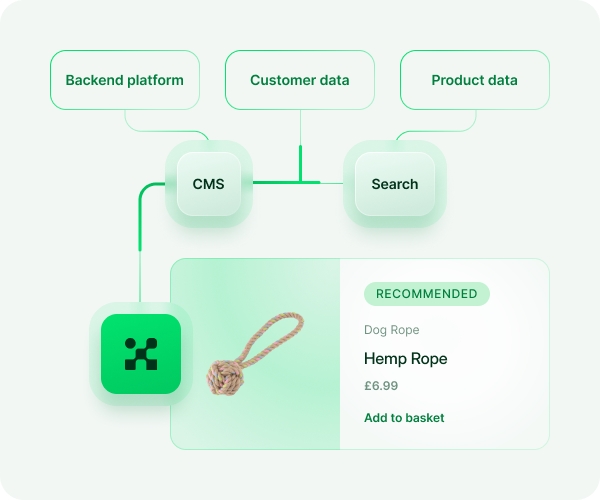
This not only streamlines implementation but also reduces reliance on expensive, specialized engineering resources, freeing teams to focus on innovation rather than backend maintenance.
Why Frontend as a Service is the smarter investment
Frontend solutions often fall into two categories: rigid SaaS platforms that limit customization or costly, time-consuming custom development. FEaaS offers the best of both worlds: a composable, high-performance solution with cost savings at every stage.
By choosing Alokai’s Frontend as a Service, businesses:
Launch faster and start generating revenue months earlier.
Cut development costs with pre-built components and integrations.
Optimize performance for higher conversions and lower abandonment rates.
Reduce long-term costs by avoiding frontend rebuilds when switching backends.
Integrate flexibly without expensive custom development.
Ready to start your FEaaS journey? Talk to our team and explore how Alokai’s solutions can save money for your ecommerce business!














